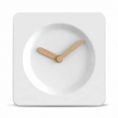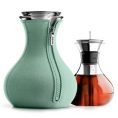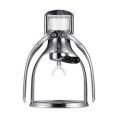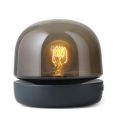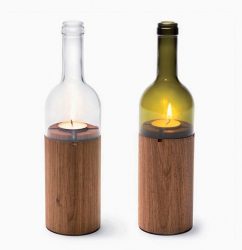How to write a business plan for a restaurant?

How to write a business plan for a restaurant?
what is the purpose of business plan? The purpose of a business plan is to create a guide that helps you navigate each step of starting and running your business. It is a comprehensive roadmap for starting and running a successful restaurant. The plan should also be concise and clear so that a stranger, for example an investor, can read it and easily understand your vision, your goals, and how you intend to turn your restaurant dream into a reality. Secondly, A well written business plan can help secure funding, attract investors, and provide a clear direction for the business.
Business plans come in a variety of formats and can be as short as one page or long enough to be bound in a booklet. A business plan is a written tool about your business that projects 3-5 years ahead and outlines the path your business plans to take to make money and grow revenue. You’ll want to start with a lean startup plan that focuses on your strategy at a high level, then follow up with a more detailed plan that outlines key points and provides more information to investors.
In short, your business plan should inform everything you have and plan to put into your restaurant to ensure continued success. Your restaurant and mission statement should be unique to your business and your vision, but that doesn’t mean you have to start from scratch. There are many examples of restaurant business plans on the Internet, or you can use a free template from the Small Business Association (SBA) as your starting point. However you write it, your final business plan should include seven main sections. These all are sections very important for every business plan.
- Executive Summary: This section provides a high-level overview of the restaurant’s goals, target market, menu, and financial projections. Concept about your restaurant, the Restaurant mission statement, realistic timeline for opening your restaurant, Your main target and location of your restaurant and how much building space your restaurant needs and at last brief market analysis. This is a brief summary of your restaurant, why the community wants or needs it, and why it will be successful. Many different types of restaurants speak to different demographics, and it’s important to know what type of restaurant you want to run. Are you opening a quick service deli focusing on takeout sandwiches and ready-to-eat salads? Or are you going to be the first tapas restaurant in town that craves more variety? If you’re using your business plan to ask for financing, the SBA recommends including financial information and high-level growth plans in your executive summary. Think of your summary as an opportunity to grab your reader’s attention. Many investors will make a split decision based on the executive summary alone – if this section is all they’re reading, make every word count.
- Restaurant Description: This section provides more detail about the restaurant’s ownership structure, history, mission statement, and any unique selling points. Now is the time to begin defining the company in more detail, including its vital description, target audience, and any other factors that might influence investors, such as the expertise you have as a consultant or the position you hold are already there Scout or reserve. You’ll want to include the legal structure of the business, stating whether you’re a sole proprietorship, restosale etc., and list current management and their roles (including your own).Now comes the fun part: writing a description of your concept. This is where you can let your creative side shine through, showing your passion for what you hope to create and enough to engage your readers and bring your vision to life. Adjectives can be used. You have already decided what kind of restaurant you are opening, now check all the other details: Service style (counter vs. sit-down, casual vs. fine dining, groups, team etc.)
Restaurant size and seating capacity(chairs, tables)
Atmosphere, including special décor and music
Options for the style of seating, lighting and other fixtures (Birthday and any events)
Working hours
Eating style
Oneline service offerings such as retail products, delivery/takeout, and catering
Unique selling points such as using produce grown on adjacent farms or guaranteeing a 30-minute lunch to better serve area office workers. List all essential that are present in the restaurant and then make a list for business plan. - Market Analysis: This section includes research on the restaurant’s target market, competitors and market trends. It should provide a clear picture of the demand for the restaurant’s menu and services. Bolster your business plan with an industry overview. This should include competitive research that offers insight into how other restaurants in your niche are doing, what successes they’ve had, and where they’ve failed so you can learn from those mistakes. Revisit your key differentiators, this time explaining how your restaurant will address the current market and exceed customer expectations.
- Menu and Service Offerings: This section provides a detailed description of the menu, including ingredients, preparation methods, and pricing. It should also describe the restaurant’s service style, such as table service, counter service, or delivery. Collaborate with your chef and keep the basic principles of great menu design in mind: Know your audience and tailor your design and details to your target customer base—the college crowd eager for drink deals and shareable food is more interested in pictures and flashy prices than diners looking for a white-tablecloth experience. will take
Menu descriptions should be short but provocative—choose words that help customers understand what they’re eating and get them excited to try it (for example, “instead of duck.” Juicy tea-drinking duck with fennel-scented plum sauce. Refer to menu psychology when setting and pricing, stick to simple numbers (no dollar signs) placed to the right of the menu item with no dots or dashes between them.
Use the same psychology to guide customers through your offers, using callout boxes and bold text to highlight more profitable items.
View your menu as an extension of your restaurant’s branding by using similar colors, design elements and fonts - Marketing Plan: This section outlines how the restaurant will reach its target market and attract customers, including advertising, promotions, and social media marketing.
- Organizational Structure and Management Team: This section describes the ownership structure, key personnel positions, and the expertise and experience of the management team.While you’ve touched on your organizational structure and management earlier in your business plan, you’ll now define your business structure and take a more holistic look at your team. An organizational chart can be helpful, as can a summary of your collective experience. Some include a bulleted list of the team’s top accomplishments that is easy to scan and digest.In addition to listing co-founders, managers, servers, etc., you can attach resumes of key players like your executive team or a renowned mixologist who is helping you develop your cocktail program.
- Financial Projections: This section includes detailed financial projections for the first three to five years of operation, including income and expenses, breakeven analysis, and cash flow projections. Finally, it’s time to address the financial side of your business, especially if you’re using your business plan to raise startup funds or additional capital after you’re already up and running. If you’re pre-launching, your estimates are just that: estimates. But those estimates must be based on market research, actual costs and projected revenue, culminating in a five-year view of everything from projected revenue to capital expenditure budgets. If your business is in operation, you will include actual financial records such as cash flow statements and your P&Ls, ideally for the last five years. Use colorful charts and graphs to highlight financial wins and make it easy for investors to quickly assess your company’s financial health.
- Appendix: This section includes supporting documents such as menus, images, and industry reports.
Writing a business plan can be a time-consuming process, but it’s essential to a restaurant’s success. A business plan should be regularly reviewed and updated to ensure that the restaurant stays on track and is able to adapt to changes in the market and competitive landscape. Should.


